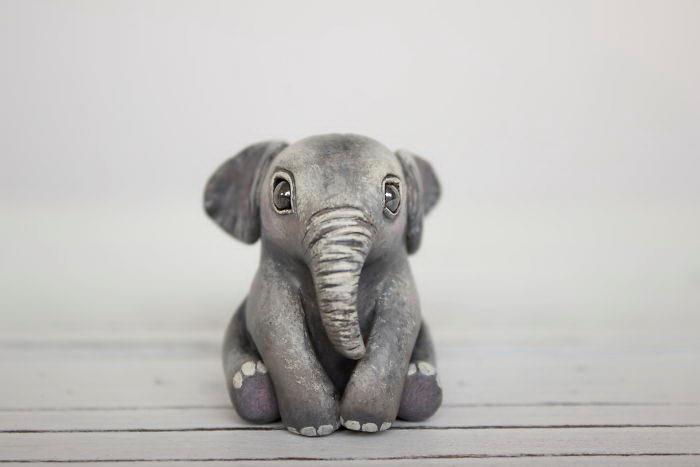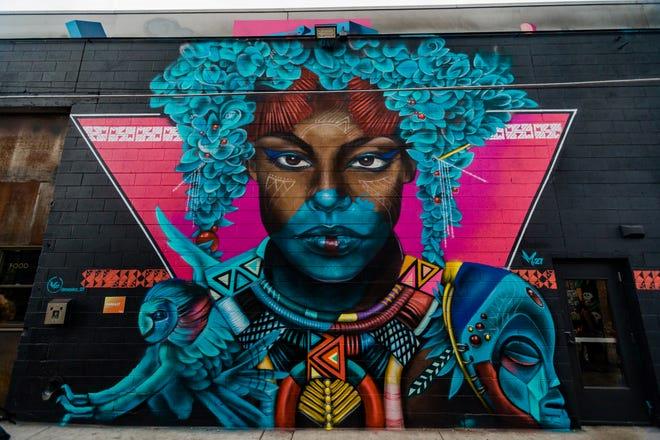(MENAFN- USA Art News)
Street art has emerged as a defining characteristic of urban life across the United States, transforming drab public spaces into vibrant galleries of expression. From the rebellious undertones of graffiti culture to the more accepted forms of urban murals, this genre of art is reshaping how we interact with our environments and one another. As both a reflection of social issues and an avenue for creative expression, street art offers an engaging narrative of life in American cities.
A Reflection of Society
At its core, street art serves as a platform for discussion. Artists like Banksy, whose work often tackles social and political themes, have influenced American street artists to delve into pressing issues such as environmental degradation, racial justice, and economic inequality. In urban centers like New York, Los Angeles, and Chicago, murals often embody the frustrations and aspirations of local communities.

For instance, the works of artists like Shepard Fairey, known for his“Obey Giant” campaign, demonstrate how street art can transcend the boundaries of traditional art to engage a broader audience. Fairey's iconic“Hope” poster of Barack Obama during the 2008 presidential campaign is a prime example of how street art can inject energy into political discourse. In creating work that resonates with societal aspirations, street artists are making their marks not just on walls, but deeply within the fabric of American culture.
The Rise of Urban Murals
As cities evolve, so too have their approaches to public art. The last two decades have seen a surge in sanctioned murals, fueled by initiatives aimed at revitalizing urban areas. Cities like Philadelphia and Detroit have embraced this trend, viewing murals as a means to enhance community identity and promote tourism.
In Philadelphia, the Mural Arts Program has completed over 4,000 murals since its inception in 1984, transforming the city into a veritable open-air gallery. Artists like Jane Golden, who founded the program, believe that murals engage communities, reduce vandalism, and give artists a platform to share their narratives. By legally commissioning murals, cities recognize the value of street art in contributing to a neighborhood's sense of place and history.
Similarly, Detroit has leveraged murals as a way to rebuild after decades of economic decline. The Detroit Beautification Project actively works with local artists to adorn abandoned buildings and forgotten spaces with murals that celebrate the city's rich history and resilience. This has created a canvas for local stories, providing both a sense of pride and an impetus for community engagement.
The Tension between Graffiti and Murals
Despite street art's increasing acceptance, the genre straddles a thin line between sanctioned art forms and graffiti, often resulting in tension within urban spaces. While murals are typically authorized and appreciated, graffiti is often viewed through a lens of vandalism and criminality. For many street artists, however, the distinction is less clear.
Graffiti originated as a countercultural movement, a response to the constraints of mainstream art. It provides a voice to those who feel marginalized by societal structures. Renowned graffiti artist Keith Haring utilized public spaces to promote his message of love and acceptance in a bold, colorful style that resonated with a generation. His work, often created without permission, highlighted the tension between public expression and legal constraints inherent in the world of street art.

This dichotomy presents unique challenges for urban planners and city officials. While many municipalities endorse murals for their aesthetic and economic benefits, they grapple with the presence of graffiti, which can transform beautiful walls into canvases of dissent. In cities like San Francisco, graffiti is viewed with a more punitive stance, leading to ongoing debates about its place in modern public spaces.
Notable Street Artists Transforming Cityscapes
Several contemporary street artists are redefining urban landscapes and pushing the boundaries of what public art can accomplish. One such figure is Kelsey Montague, known for her interactive murals that invite viewers to engage directly with the artwork. Montague's popular angel wings murals, which have graced cities from New York to Los Angeles, invite passersby to become part of the art, deftly blending personal expression with collective experience.
Another powerful voice in street art is Fafi, a French artist whose whimsical, feminine characters adorn walls in cities worldwide, including New York and Los Angeles. Fafi's vibrant works juxtapose gender norms and promote discussions about femininity within the highly male-dominated art world of street culture.
Nena Ivanovic, an emerging muralist from Chicago, uses her work to spotlight issues of cultural heritage and community loss. Ivanovic's murals not only beautify urban environments but also reflect shared stories, hopes, and the resilience of local identities.
The Future of Street Art in Urban Spaces
As cities continue to evolve, so will street art's role within public spaces. The influence of street art on urban landscapes signals a shift towards embracing creativity as a necessity for community identity and cohesion. Cities are beginning to recognize the transformative power of public art, leading them to adopt policies that encourage engagement with street artists.
The challenge for municipalities will be balancing the acceptance of murals while finding a constructive dialogue with graffiti artists. Creating spaces where these two forms of expression can coexist might yield a more nuanced understanding of urban culture. As artists continue to push boundaries, American cities can become canvases of diverse narratives-each telling a unique story of the communities they inhabit.
In conclusion, street art and graffiti are far more than mere decoration. They are living narratives shaped by communities, infused with cultural history, and powered by individual voice. As urban public spaces evolve, these art forms will no doubt continue to play a critical role in shaping the visual and social landscape of American cities. The ongoing dialogue between sanctioned murals and unauthorized graffiti presents not only a challenge but also an opportunity to cultivate an inclusive art culture in our urban environments.
MENAFN07102024005694012507ID1108755641
Legal Disclaimer:
MENAFN provides the information “as is” without warranty of any kind. We do not accept any responsibility or liability for the accuracy, content, images, videos, licenses, completeness, legality, or reliability of the information contained in this article. If you have any complaints or copyright issues related to this article, kindly contact the provider above.